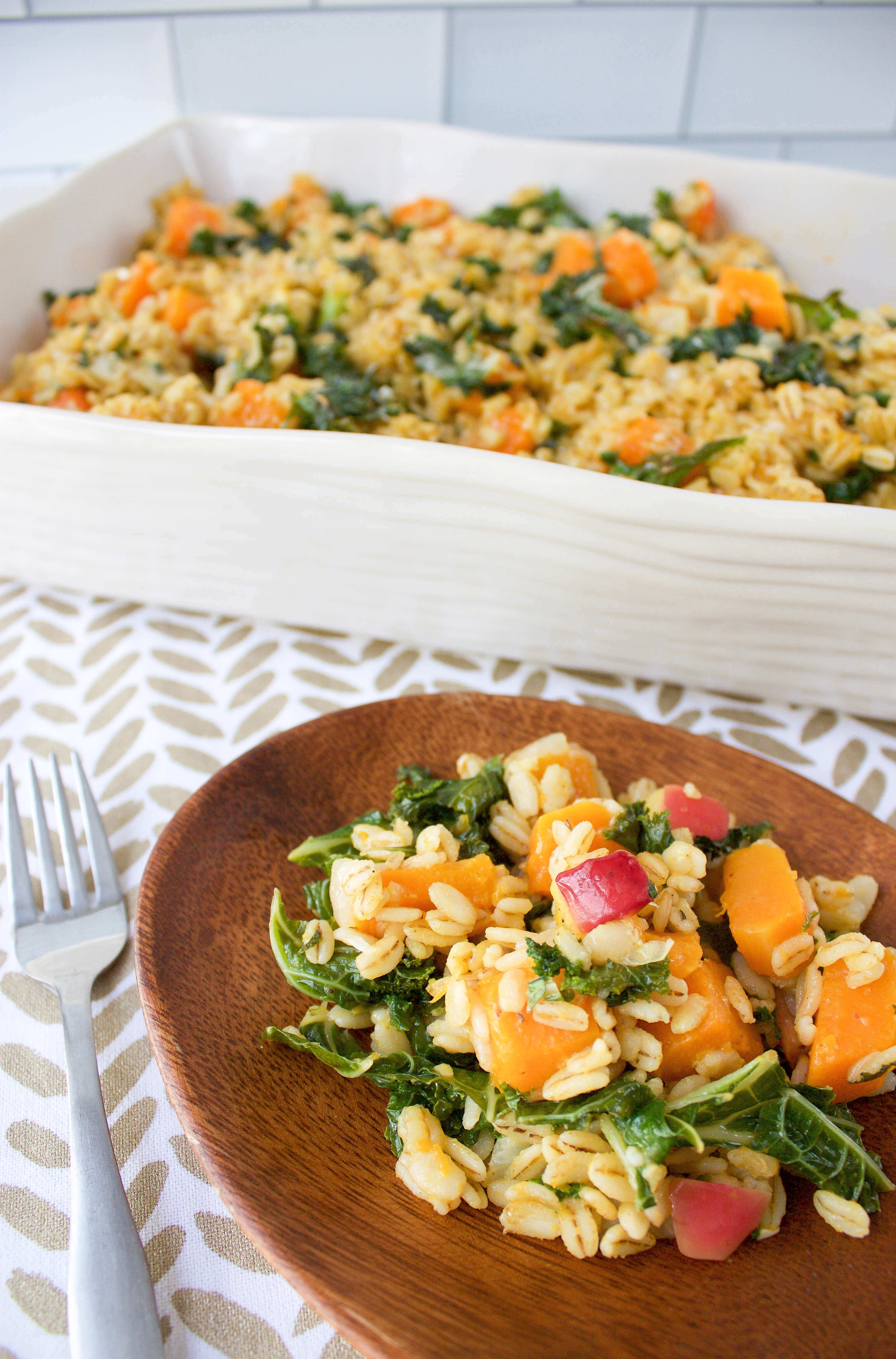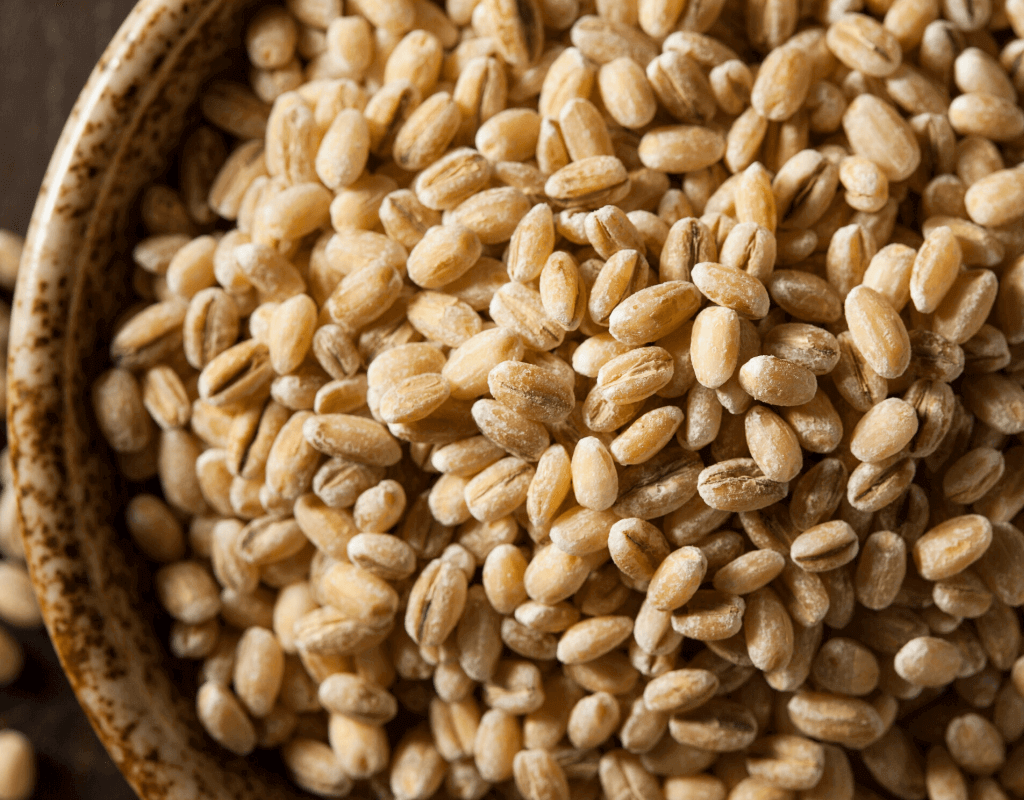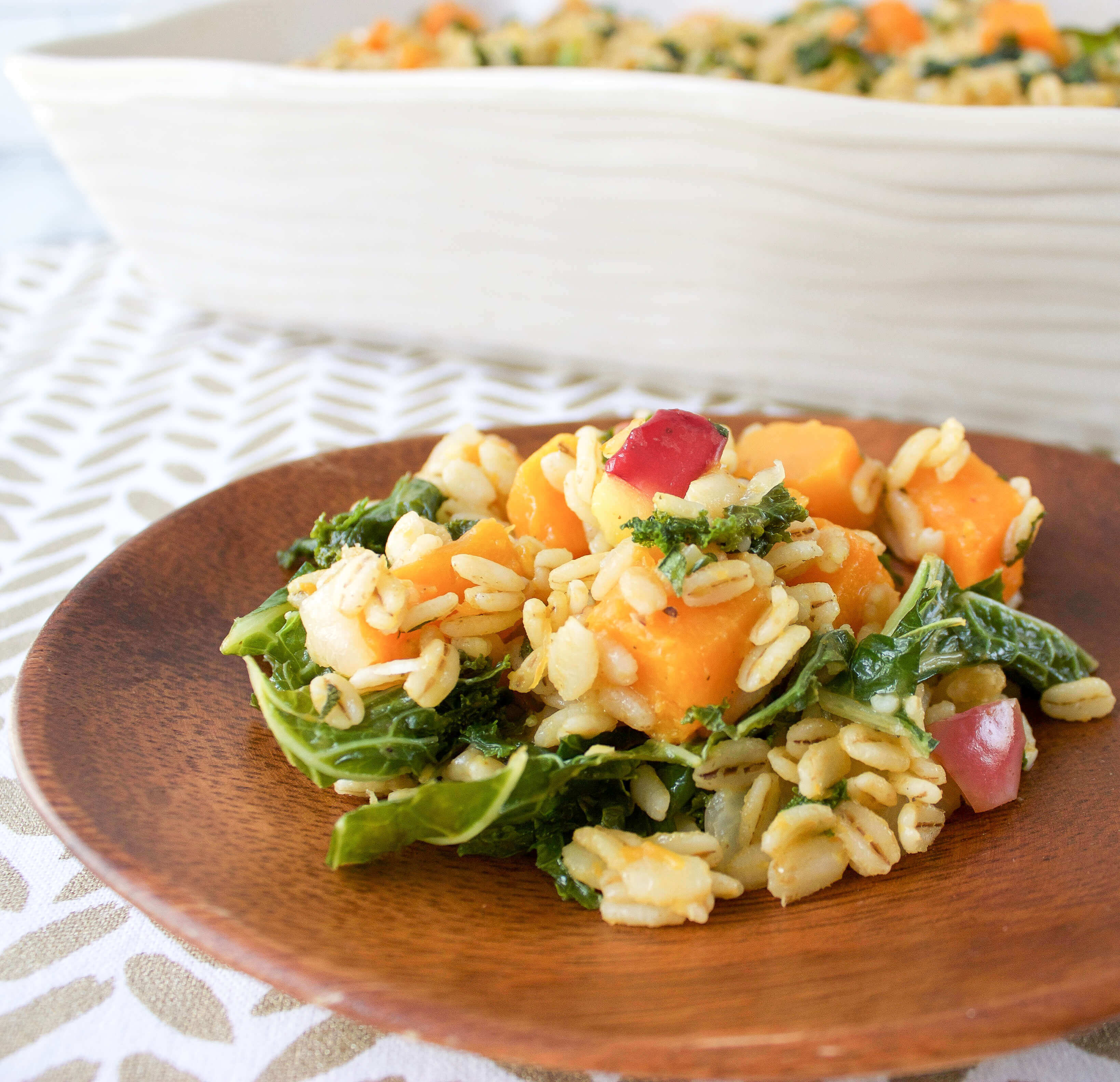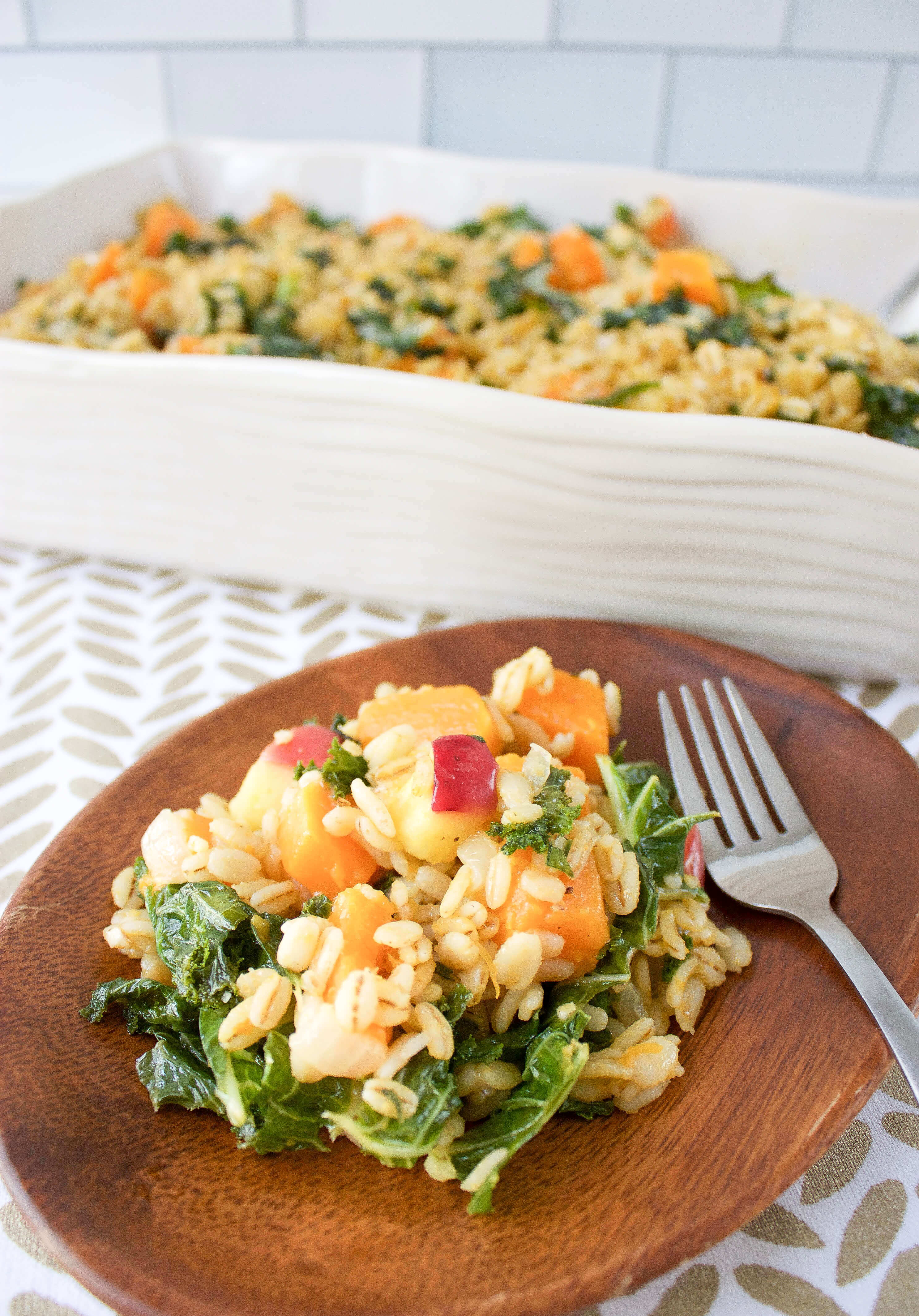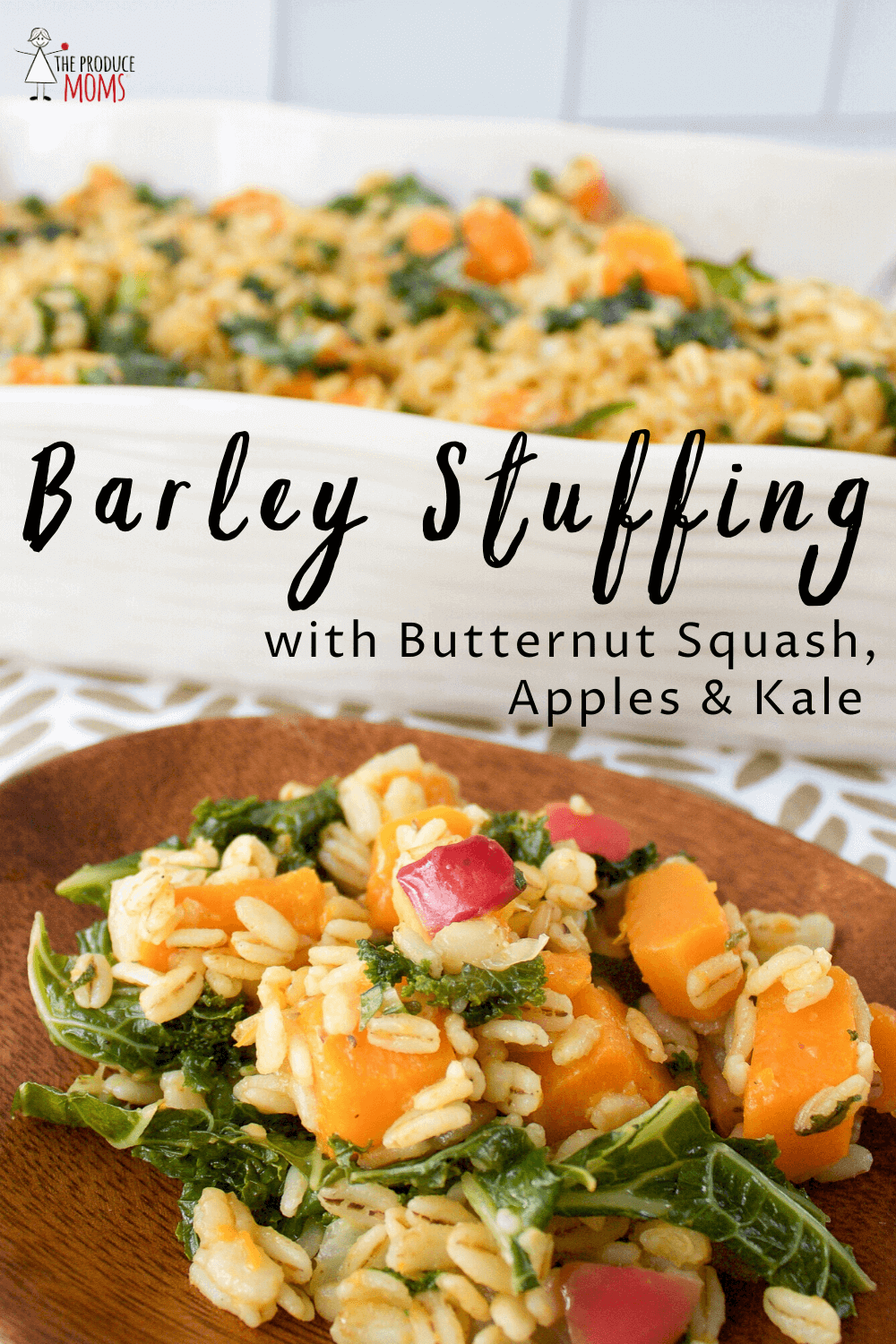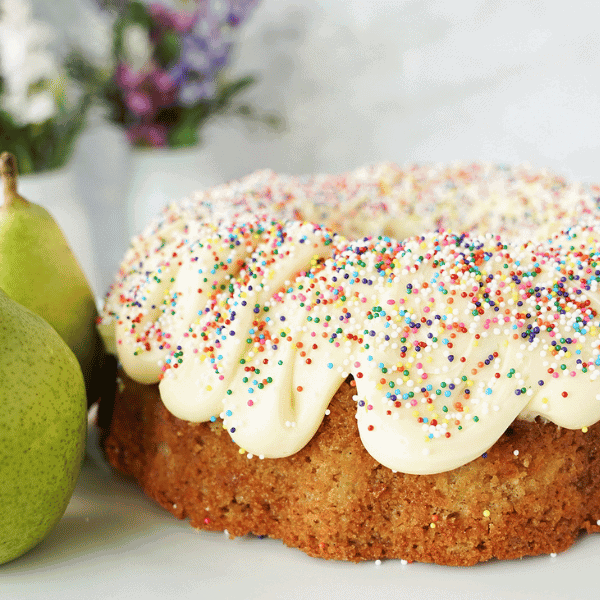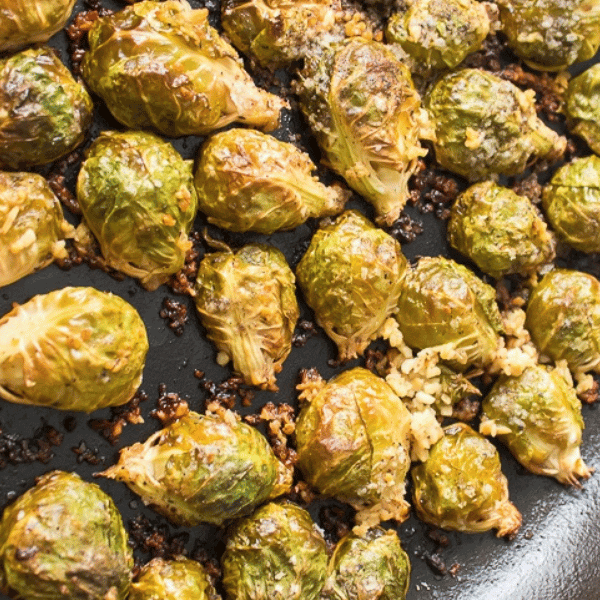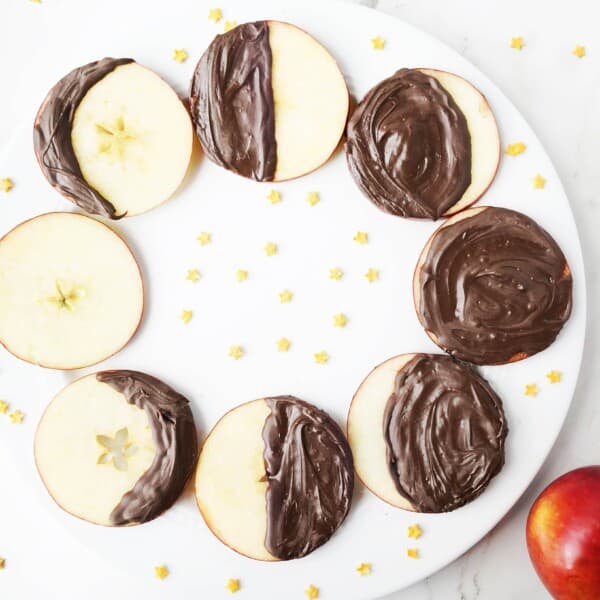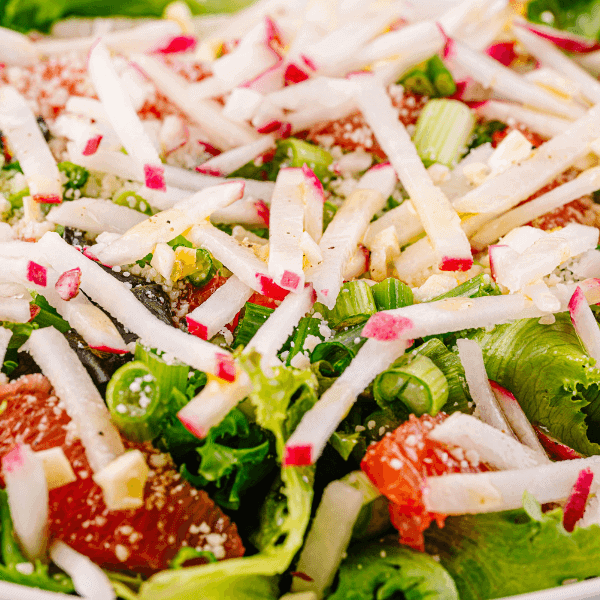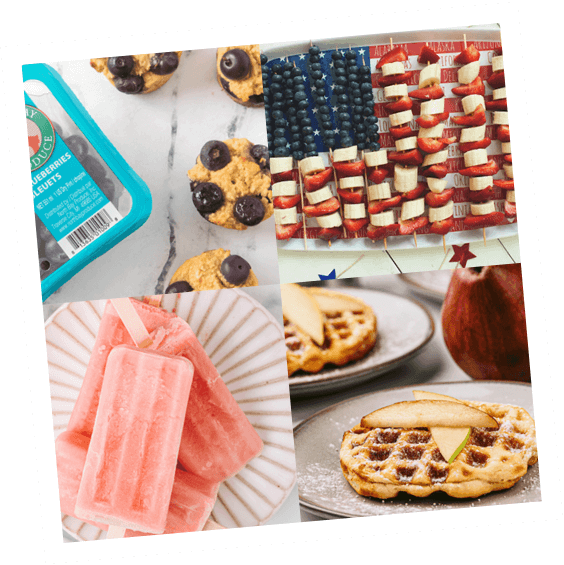Barley Stuffing with Butternut Squash, Apples, and Kale
Nov 19, 2019, Updated Nov 09, 2022
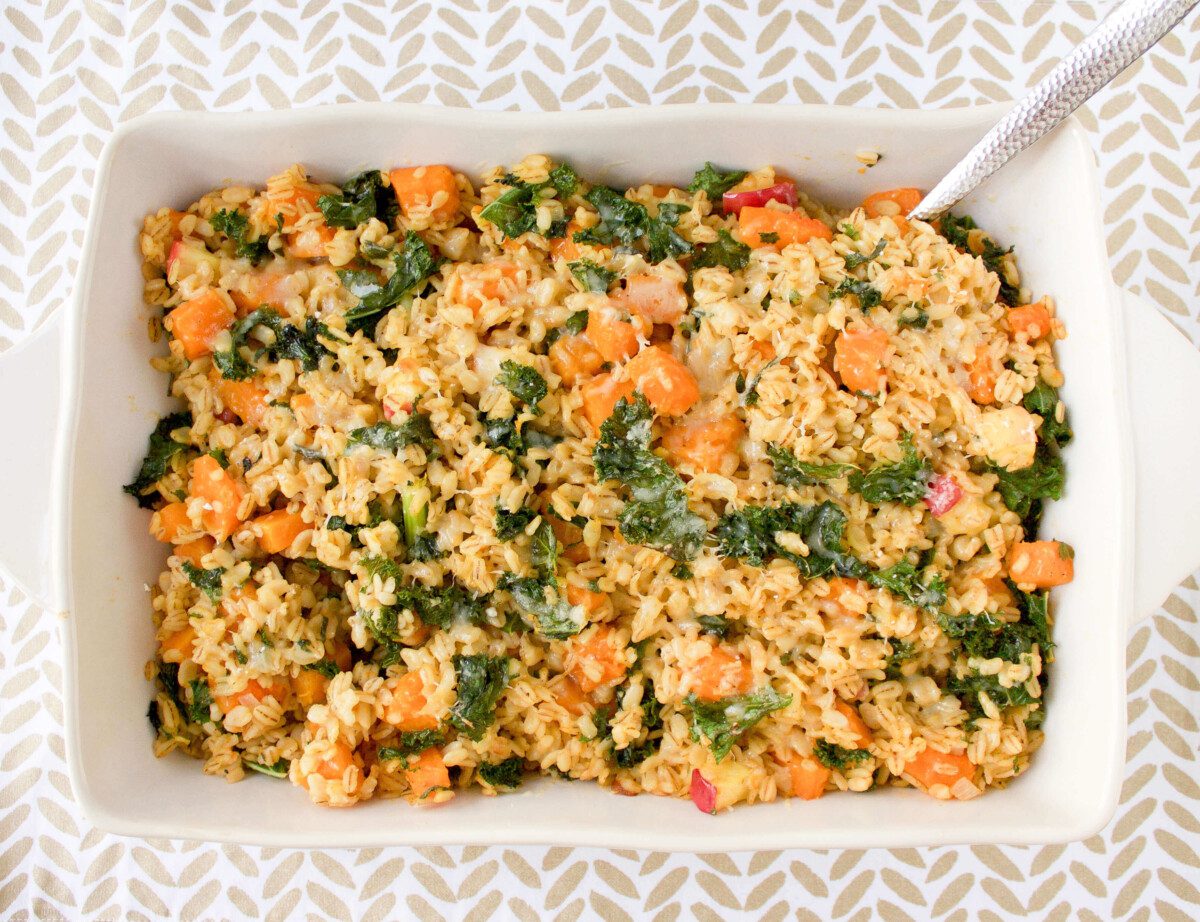
This post may contain affiliate links. Please read our disclosure policy.
Lori Taylor, The Produce Moms founder, is an ambassador for the Produce for Better Health (PBH) Foundation. Together we can eat more fruits and veggies!
‘Tis the season for holiday music, gift-giving, and gathering with friends and family. It’s also the season of food temptations… candy canes, hot cocoa, pumpkin pie, and heaping piles of stuffing.
Food is a part of our holiday celebrations but we can sometimes find ourselves eating things we really don’t want to indulge in. If you want that slice of apple pie, then by all means have the slice of apple pie! But there are also ways to satisfy holiday cravings with sensible alternatives.
Stuffing is a mainstay of most holiday tables. We love doctoring up stuffing with lots of fruits and veggies but if you want to skip heavy bread-based stuffing altogether, try this recipe for Barley Stuffing with Butternut Squash, Apples, and Kale. It’s hearty, just like traditional stuffing, but is nutrient-dense with fewer carbs.
What is barley?
Barley is a grain like oats, quinoa, or farro. It has a chewy texture and nutty taste. It’s a common ingredient in soups, stews, and casseroles.
When shopping for barley, you’ll notice that there are two types: hulled barley (also known as barley groats) and pearl barley. Hulled barley is considered a whole grain because only the outermost hull has been removed. Pearl barley, on the other hand, has had the outer hull and bran layers removed.
Hulled barley is the most nutrient-dense of the two types but pearl barley is still nutritious. Both are a good source of fiber and contain iron, magnesium, zinc, copper, and B vitamins. Both types are filling and can help curb your appetite.
Many recipes call for pearl barley because it takes considerably less time to cook. If you have the time, go for hulled barley. Otherwise, pearl barley is still a smart choice. Either type can be used in this stuffing recipe.
How to make barley stuffing
You’ll find this recipe for Barley Stuffing with Butternut Squash, Apples, and Kale is quite easy to whip up! The time commitment depends on if you use hulled or pearled barley (check the package for cook times).
Begin by cooking your barley according to package directions in either chicken or vegetable broth. If you use vegetable broth, then your vegetarian and omnivore guests alike can enjoy this delicious side!
While your barley is cooking, prepare your other produce starting with the butternut squash. Peel it then cut off and discard both ends. Cut the squash in half and remove the seeds (the seeds can be saved and roasted later just like pumpkin seeds). Cut into ½” cubes and set aside.
Dice and peel your onions and set aside.
Wash, de-stem, and chop the kale and set aside.
Wash and cut up the apple into ½” cubes and set aside. There’s no need to peel the apple first. The skin becomes tender with cooking and adds a nice burst of color to the dish.
Heat a large skillet to medium heat and add olive oil and butter. Add squash cubes, onion, garlic, apple, and black pepper to the skillet and cook until the squash is fork tender. Add the chopped kale and cook for 1-2 minutes or until it has started to wilt.
Once the barley is finished cooking, add it to the skillet and gently mix all the ingredients until thoroughly combined.
Pour roughly half of the mixture into a baking dish and then add a thin layer of shredded parmesan cheese. Add the remaining mixture and top with more cheese. Bake uncovered for 15-20 minutes or until heated through and the cheese is melted.
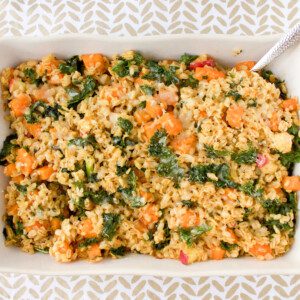
Barley Stuffing with Butternut Squash, Apples, and Kale
Ingredients
- 1 butternut squash chopped into 1/2" cubes
- 6 cups kale de-stemmed and chopped
- 1 onion chopped
- 1 red apple chopped
- 2 tbsp butter
- 2 tbsp olive oil
- 2 cups barley
- 4 cups vegetable broth
- 10-12 fresh sage leaves diced
- 1 tsp black pepper
- 1 tsp salt
- 2 cloves garlic minced
- 3/4 cup Parmesan cheese shredded
Instructions
- Preheat oven to 350 degrees.
- Cook barley according to package directions in either chicken or vegetable broth.
- Heat a large skillet to medium heat and add olive oil and butter. Add squash, onion, garlic, apple, salt and black pepper to the skillet and cook until the squash is fork tender. Add the chopped kale and cook for 1-2 minutes or until it has started to wilt.
- Once the barley is finished cooking, add it to the skillet and gently mix all the ingredients until thoroughly combined.
- Pour roughly half of the mixture into a baking dish and then add a thin layer of shredded parmesan cheese. Add the remaining mixture and top with more cheese. Bake uncovered for 15-20 minutes or until heated through and the cheese is melted.
Nutrition information is automatically calculated, so should only be used as an approximation.
The Produce For Better Health (PBH) Foundation is sharing ways to fill holiday cravings with fruits and vegetables with their initiative, #NoCraveNovember. From feel good holiday foods to crave-worthy fruits and veggie ideas, they have you covered.
Here are some other satisfying ways to add more fruits and vegetables to the holiday season:
- SweeTango® Apple Pumpkin Spice Smoothie
- Mashed Potato Alternatives
- Roasted Shallot and Rosemary Butter
- Cherry Cranberry Sauce
- Caramel Apple Smoothie
- Pear and Cheese Trays
- Holiday Pancakes for Kids
- Kale and Sausage Handpies
And be sure to add at least one festive fruit or veggie tray to every gathering! Here are our holiday favorites:
- 3-D Strawberry Christmas Tree
- Snowman Vegetable Tray
- Star of David Fruit Tray
- Thanksgiving Turkey Veggie Tray
- Easy Thanksgiving Turkey Caramel Apple Tray
How will you fill holiday cravings with fruits and vegetables? Share your ideas on Facebook, Twitter, and Instagram using the hashtag #NoCraveNovember and #HaveAPlant.
